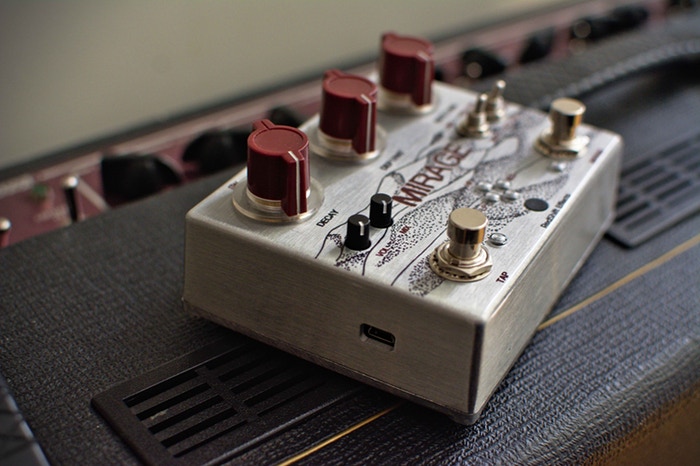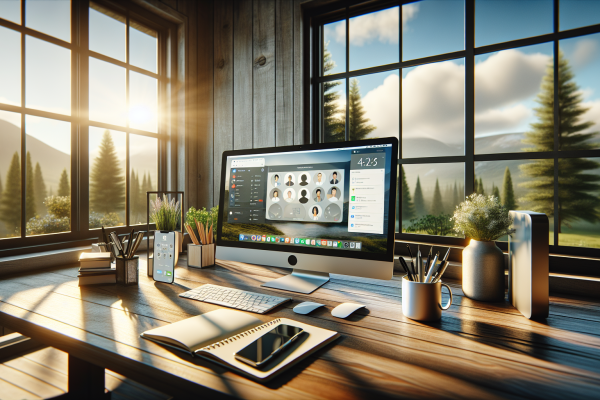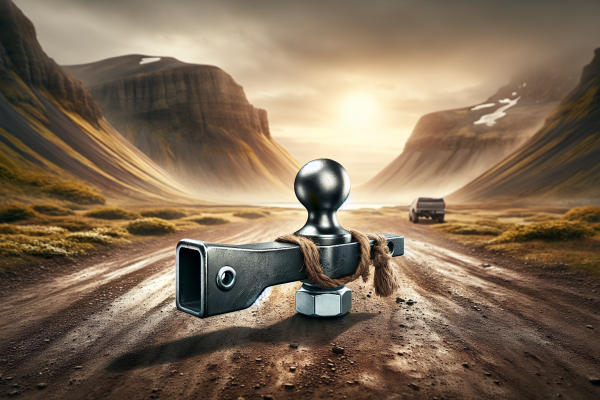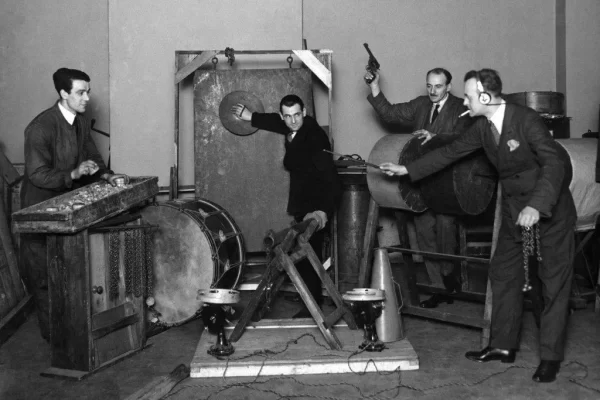No guitarist can deny that delay sounds are a hidden force behind a lot of their amazing performances. A delay pedal is the secret weapon of many players today. So why do you need to consider a delay pedal? Let’s figure out in this article.
What does it sound like?
It can sound like different effects, depending on how you dial in the settings of your delay pedal. Here are some effects that it offers. The first one is a reverb effect. This is an effect that helps create the illusion of a larger space. Secondly, a tremolo effect. This can help simulate the rapid-fire volume fluctuations that make tremolos work. Next, it can sound like a compressor. This effect can extend and boost the sounds of your guitar. Also, it offers an echo effect. This effect produces carbon copies of the notes you play.
In addition, it sounds like a reverse tape effect. This effect is only available on certain delay pedals where you play “backward”. Last but not least, it can be like a chorus effect. This effect helps create the illusion of multiple instruments. However, this is only possible on delay pedals that include pitch modulation. As you can see, a delay pedal is an extremely versatile effect. You can produce an effect you want depending on the specific parameters of your pedal as well as how you dial them in. Therefore, you need to consider a delay pedal carefully before purchasing one.
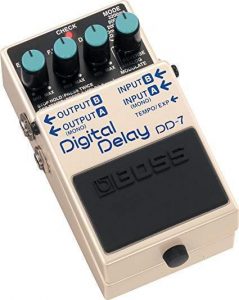
How does a delay pedal work?
It has a wide array of possible settings, depending on the make and model. Now we will take a look at a few of the most common parameters
1: Effect level
First, you need to understand processed signal and unprocessed signal. While processed signal is often referred to as “wet”, unprocessed signal is typically referred to as “dry.” Effect level controls how much of the processed signal will be coming through the signal chain. For instance, if you turn your Effect knob all the way up, your signal will turn to be processed signal which is completely wet. This can create trippy effects, however, it could overwhelm the song structure easily. So a good advice for you is to keep the Effect knob at a reasonable level.
2: Feedback
In most cases, delay pedals can return their delayed sounds back into the signal chain. From here, they will be repeated again and again. By turning up the Feedback knob, you will allow cascades of delay to pour out of your amplifier. Be noted that you should use this parameter prudently. While a delay tone is boring with no feedback, it is no good when it has too much feedback. Because it will quickly turn your output into pure chaos which is perfect for ambient sound collages, but when you play with other musicians, it is fairly useless.
3: Delay time
This parameter controls how long the pedal can “waits” before it replays your audio performance. There are two types of delay time, including short delay time and long delay time. While the short one is around 50 milliseconds which will produce the instant “slapback” effect. This is quite popular in old-school country music and surf rock. The long delay time is around 800 milliseconds and it can create a canon effect, where a line of music is repeated on top of itself after a few beats.
You can try these 3 delay effects
With a delay pedal, you can produce a lot of tones, but here are some common ones:
1: Lead guitar boost
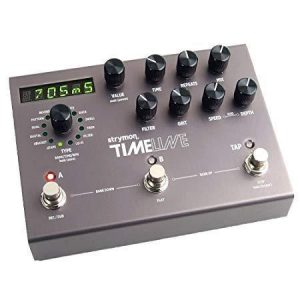
Plenty of guitarists use delay pedals to extend the sustain of their solos. You might have heard of the big names like Richie Sambora of Bon Jovi, and Dave Murray of Iron Maiden or Jennifer Turner of the Natalie Merchant band, they all do it. You should produce this by setting your delay time to about 380 milliseconds, your effect level to about 40 percent and your feedback to about 45 percent. Also, you should try it at the end of an overdriven signal chain.
2: Slapback effect
A slapback effect can be ideal for those who don’t want a lot of reverb from the delay. In order to produce this effect, set your delay time to about 120 milliseconds, your overall effect level to about 65 percent and your feedback to about 20 percent. You will be amazed at the results.
3: Cascading delay
The Edge from U2 is the most famous guitarist of all time when it comes to delay. One of his most popular songs is “Where The Streets Have No Name”. If you want to produce his signature tone like on this one, you will need a dual delay effect. Although the high-end pedals like DD-500 and Strymon TimeLine can do this, most compact boxes like the DD-7 and the Carbon Copy cannot. To get a nice Cascading delay, you can set your first delay for about 350 milliseconds with your feedback at about 30 percent. Set your second delay for 520 seconds with your feedback at 10 percent. You also need two amplifiers to really sound like the Edge.
What are the best delay pedals?
When you consider a delay pedal to buy, you need to think about one that covers your sonic needs and that it has the price you can afford. As there is a wide range of models and prices, it can be confusing for you to choose. Here are a few options:
1: Boss DD-7
The Boss DD series offer a flagship delay pedal. If you are a fan of this brand, you know Boss issued its first compact delay stompbox in 1981. Later, it has offered a lot of types of delay pedals, including digital delay, analog delay, pitch shifting, reverb, and looping in these small compact enclosures. This DD-7 Digital Delay was released in 2008 and it has been the brand’s flagship compact delay. Just like multiple modes of digital delay, it features an analog delay simulation, a reverse tape loop simulation, and a modulation effect for “chorus” tones, as well as tap tempo.
2: Strymon TimeLine
This Strymon TimeLine delay pedal is not cheap or especially compact, but it adds an amazing number of effects to a pristine delay circuit. Specifically, the company advertises it as “12 delay machines” built into the unit. Similar to the DD-7, it can add pitch modulation to your delay tone. Also, it can add overdrive using its “Grit” knob. The Strymon TimeLine features nine onboard dials, can be either exciting or overwhelming, depending on your desire to tinker.
3: MXR Carbon Copy
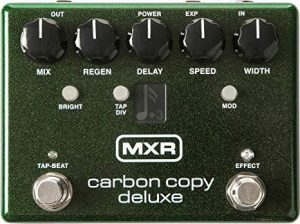
The MXR Carbon Copy only features three parameter knobs: Mix (the effect level), Regen (the feedback amount), and Delay (the time setting). In addition, it features a single push-button which can add a modulation effect. Compared to the Boss and Strymon models, none of these parameters can be dialed in as precisely, but many rock n’ roll players prefer this. It’s also a relatively affordable analog delay, which helps produce a “warmer” tone but it makes certain functions too.
With this article, hopefully you can find all the information you need when you consider a delay pedal. We recommend that you should use a certain pedal for tape delay. If you have any questions, please leave a comment. Thank you!

